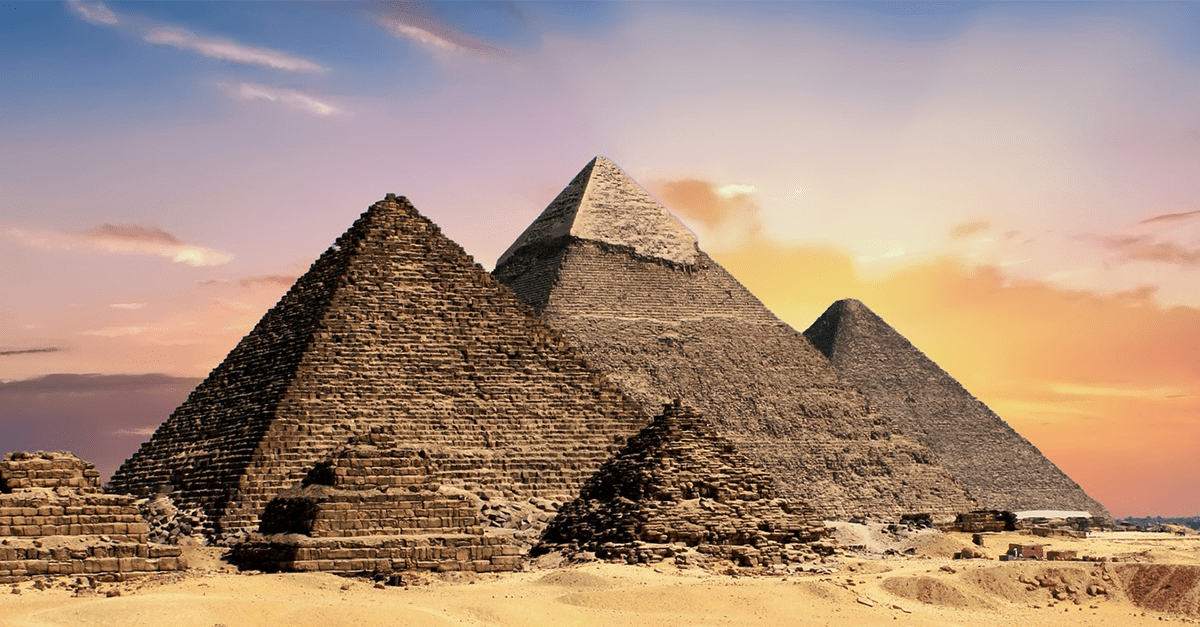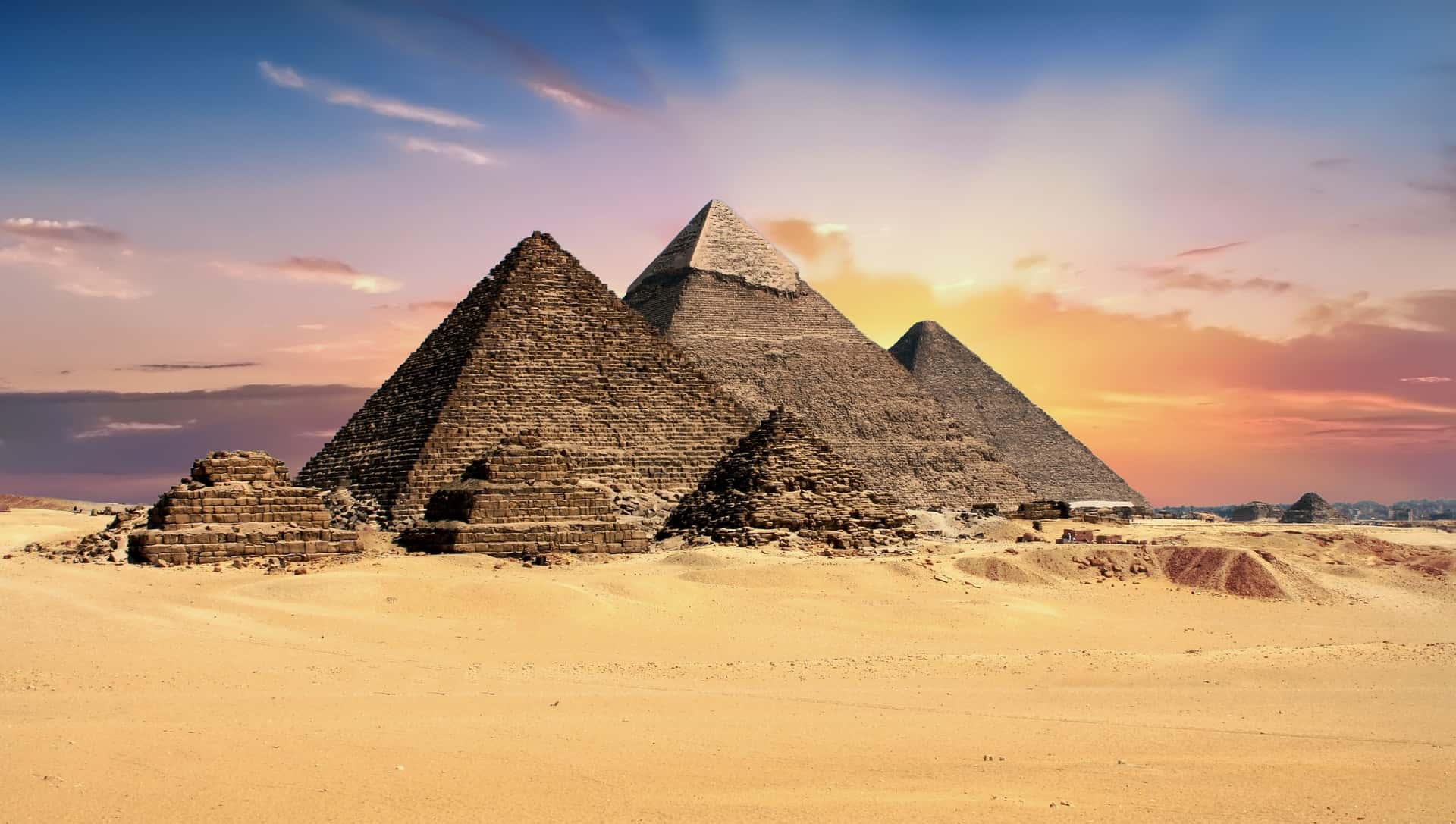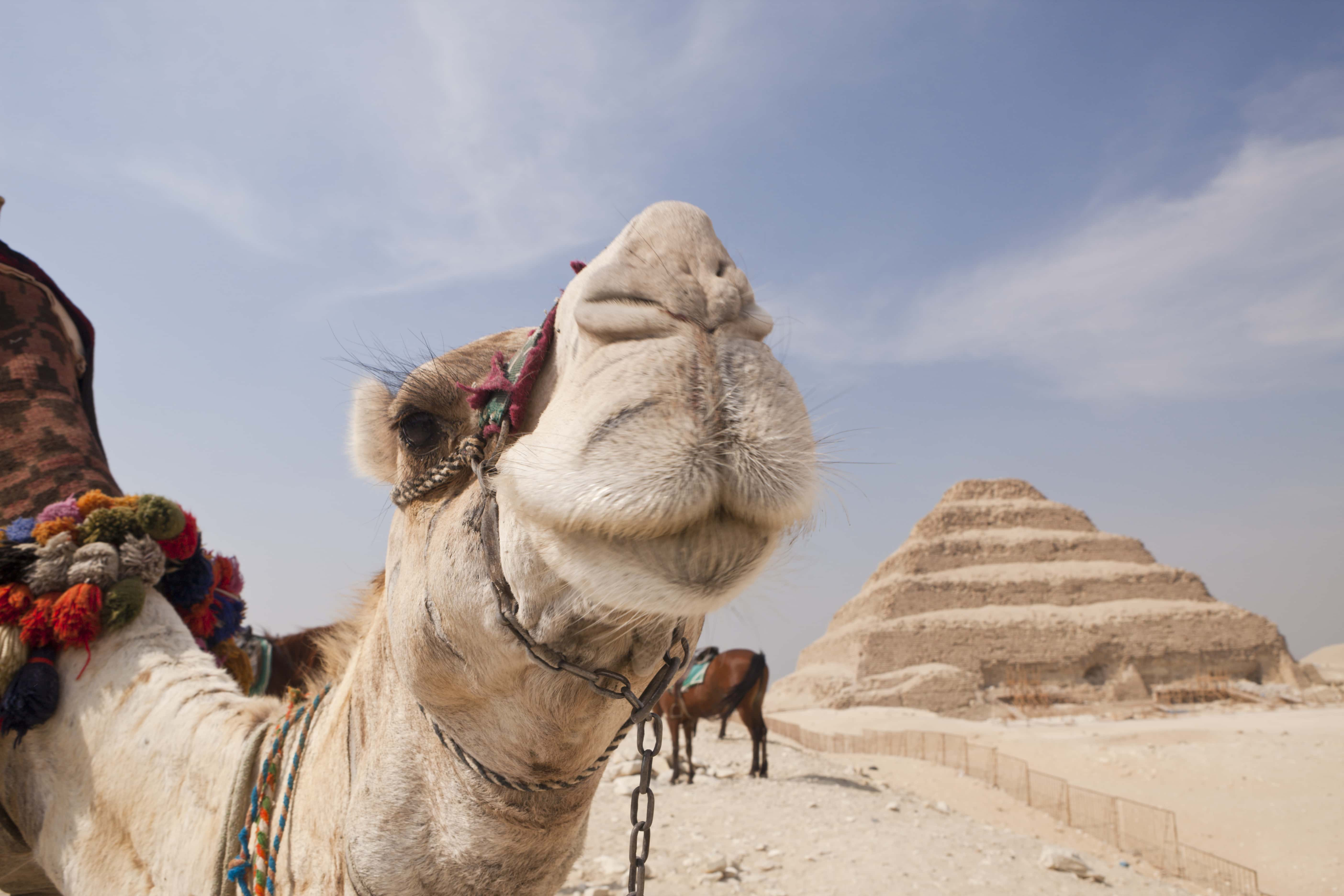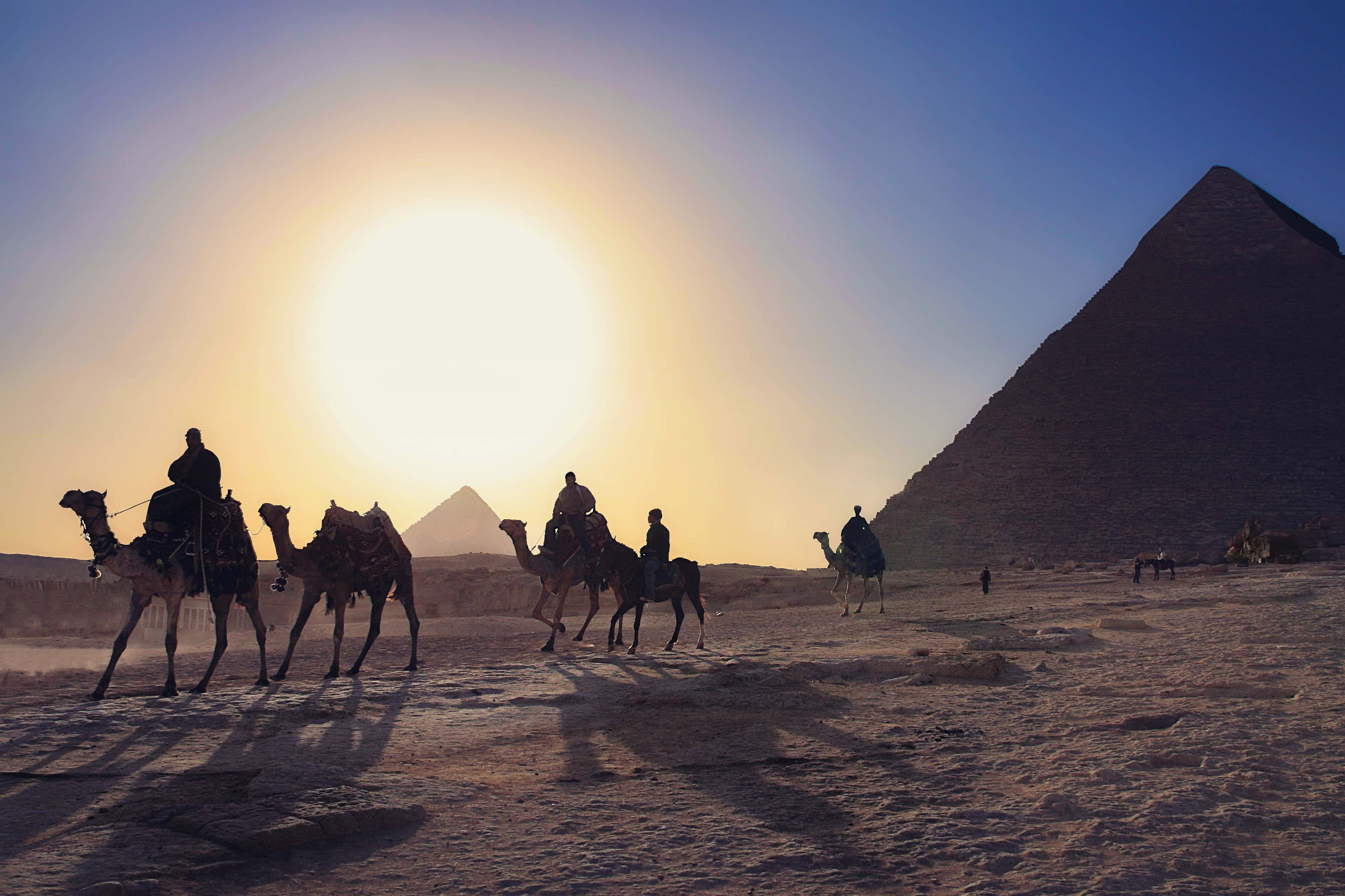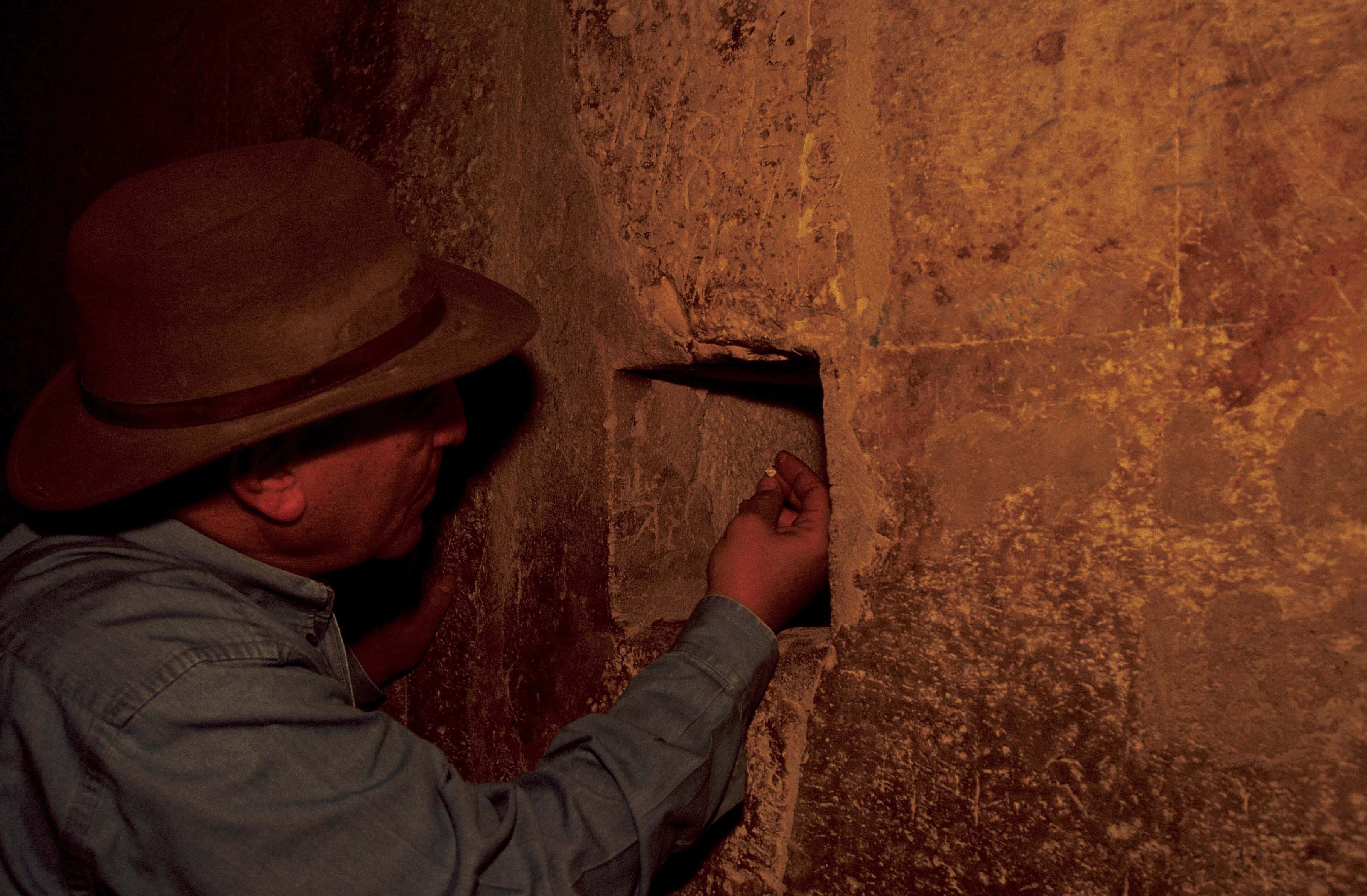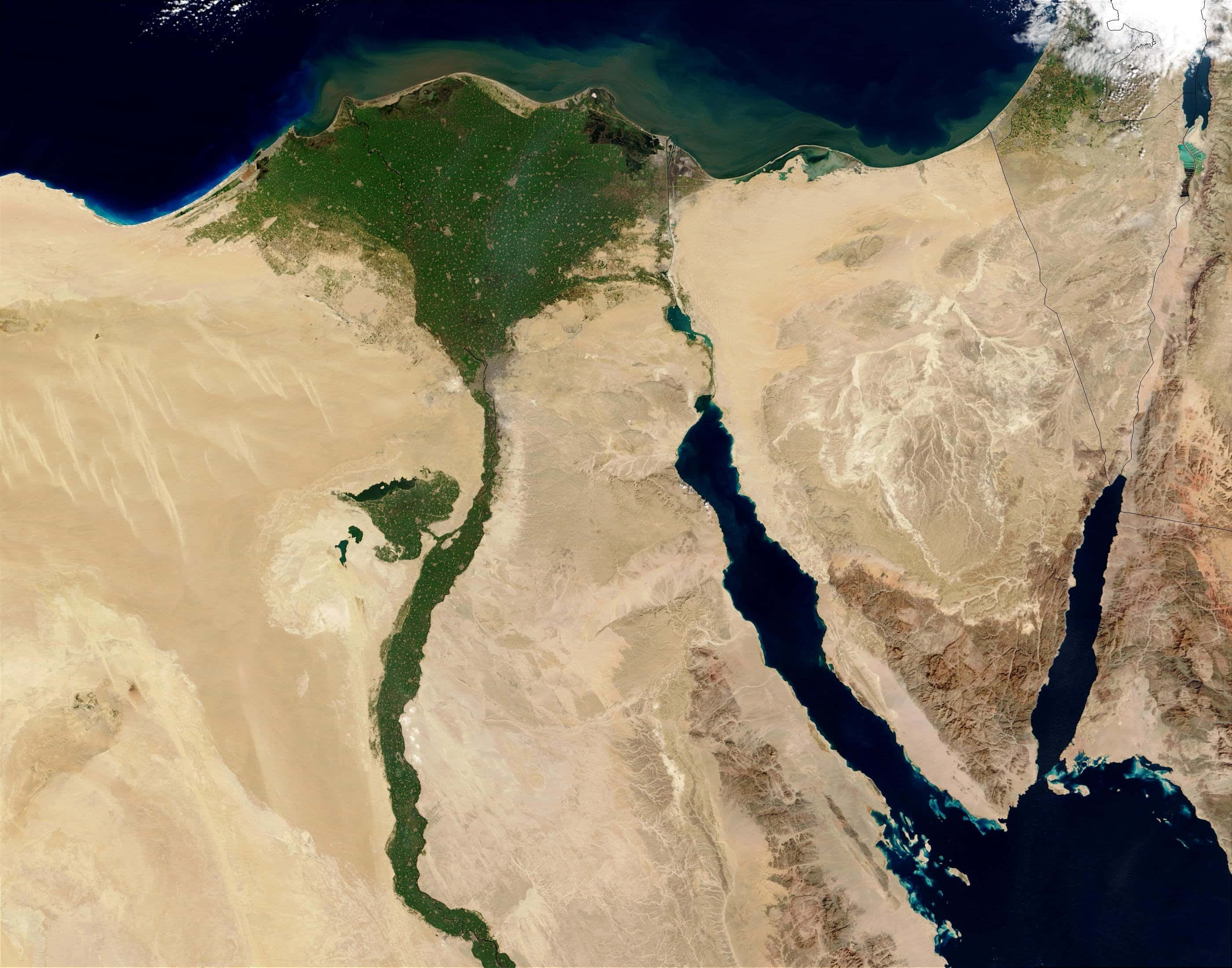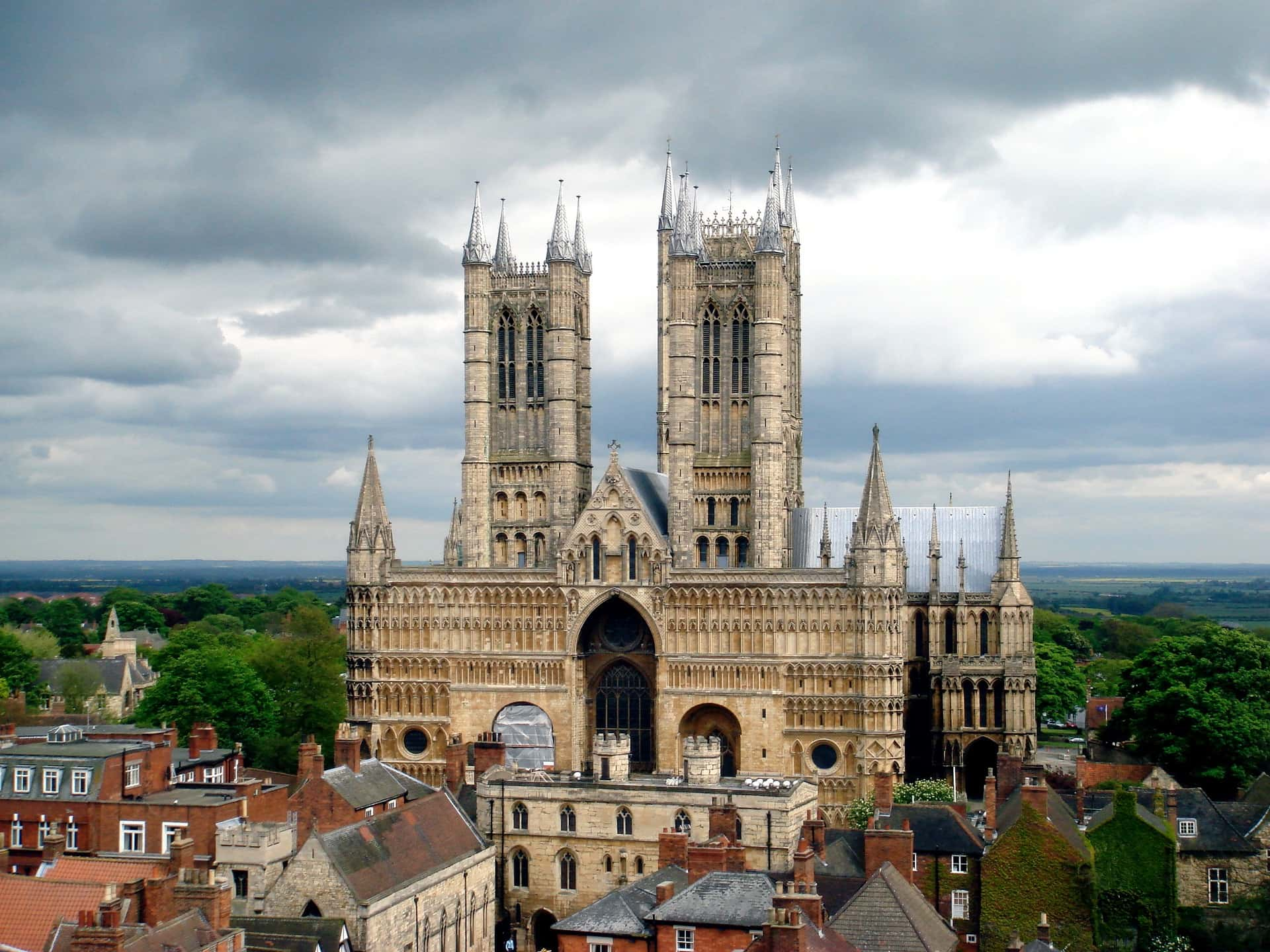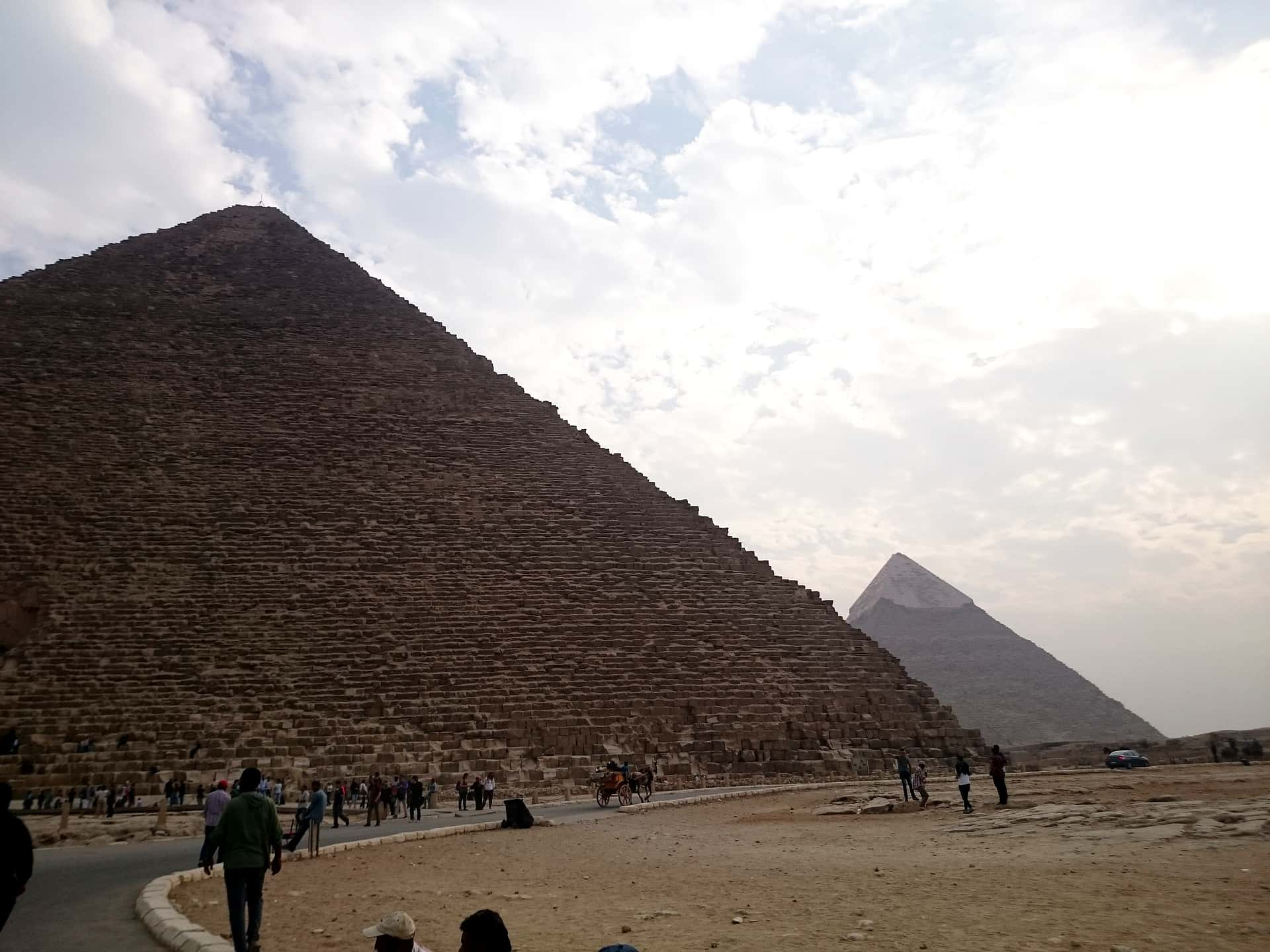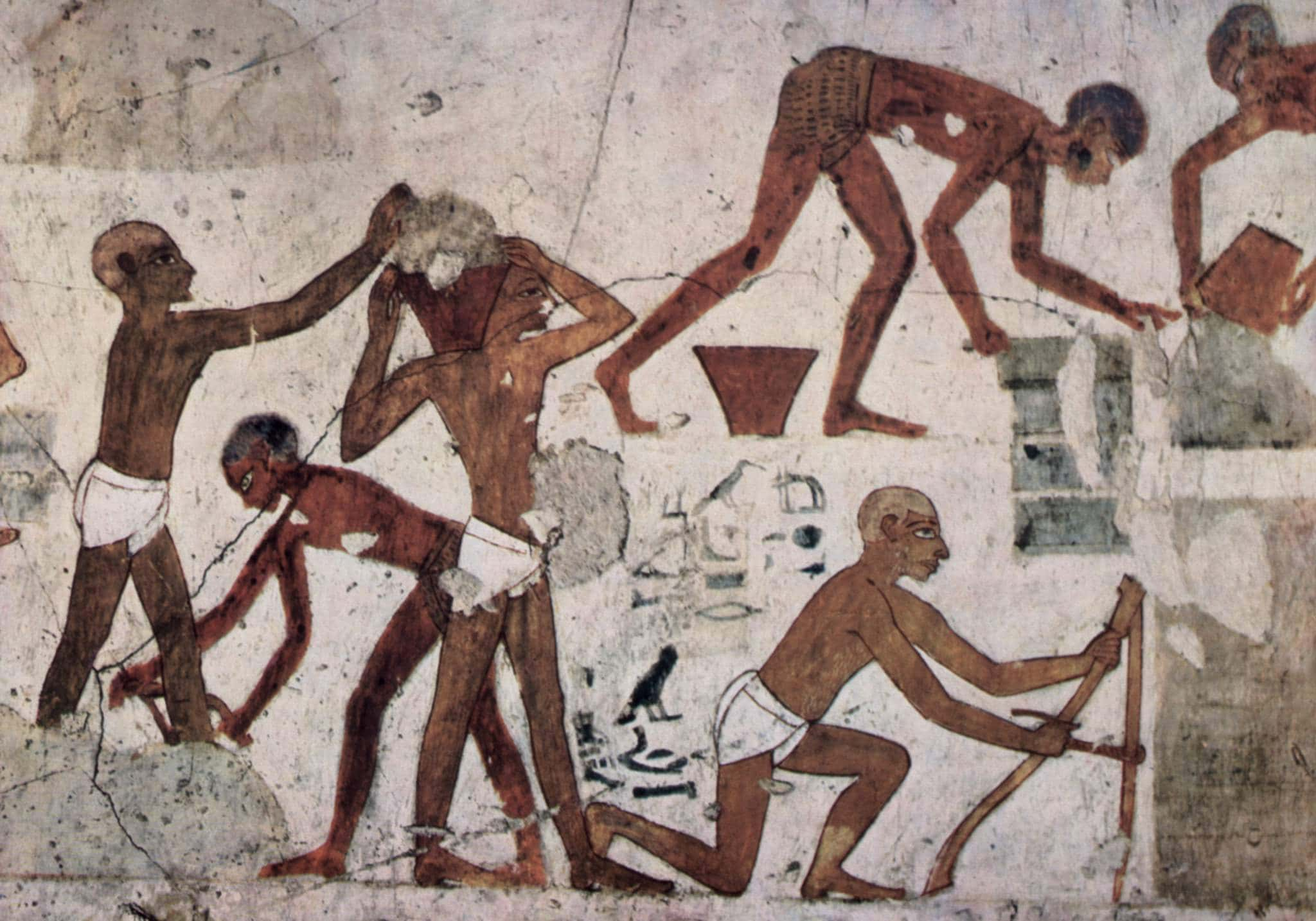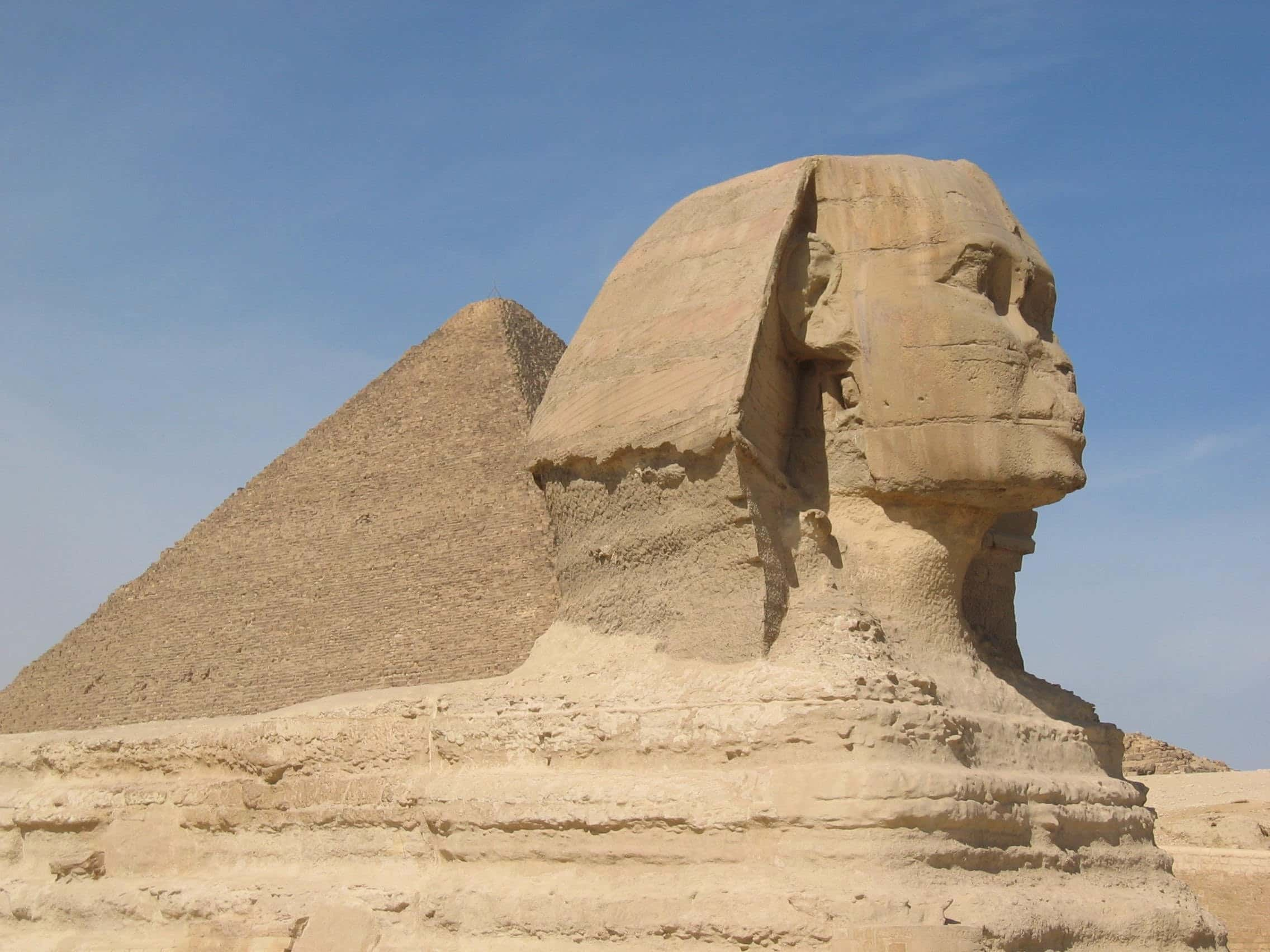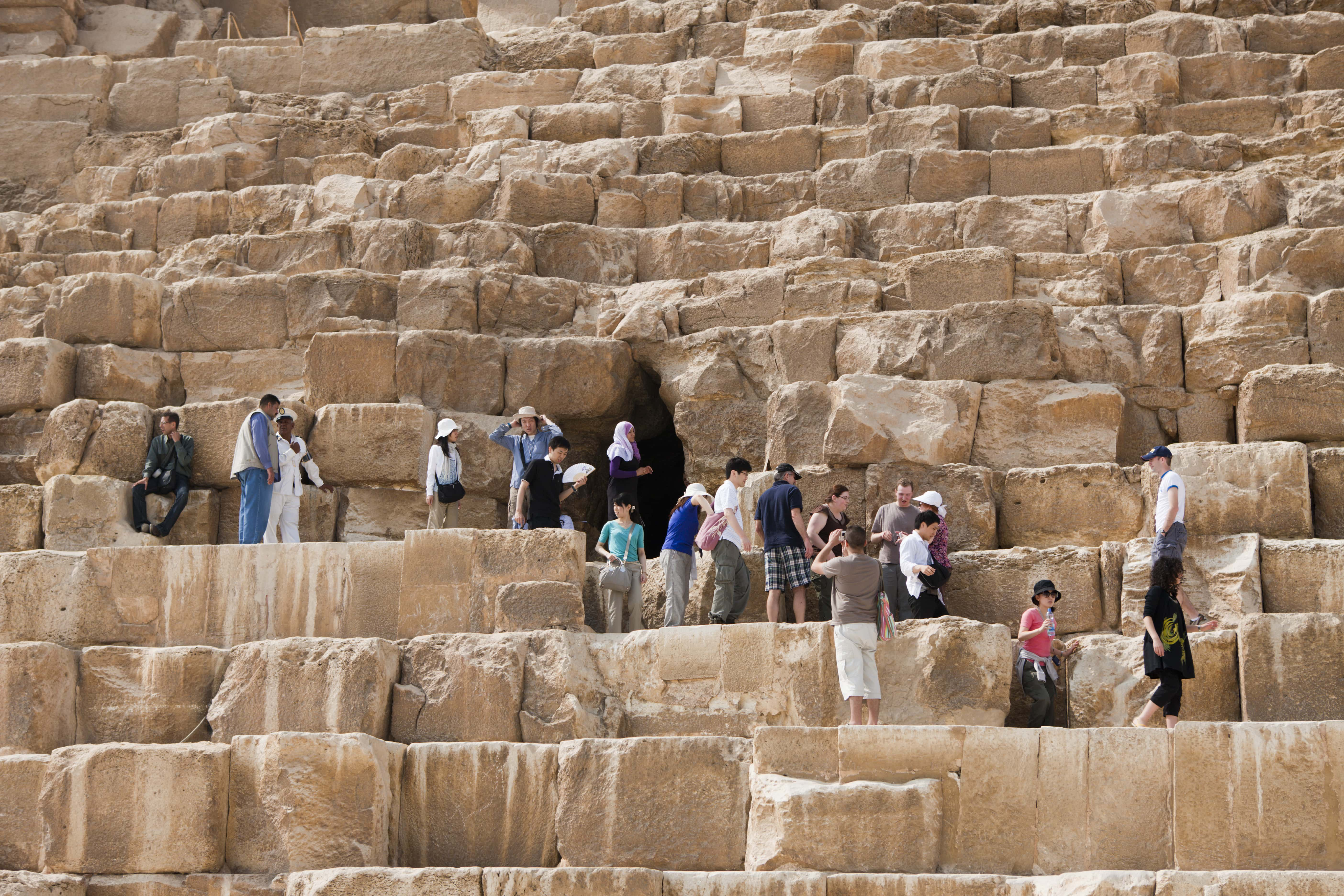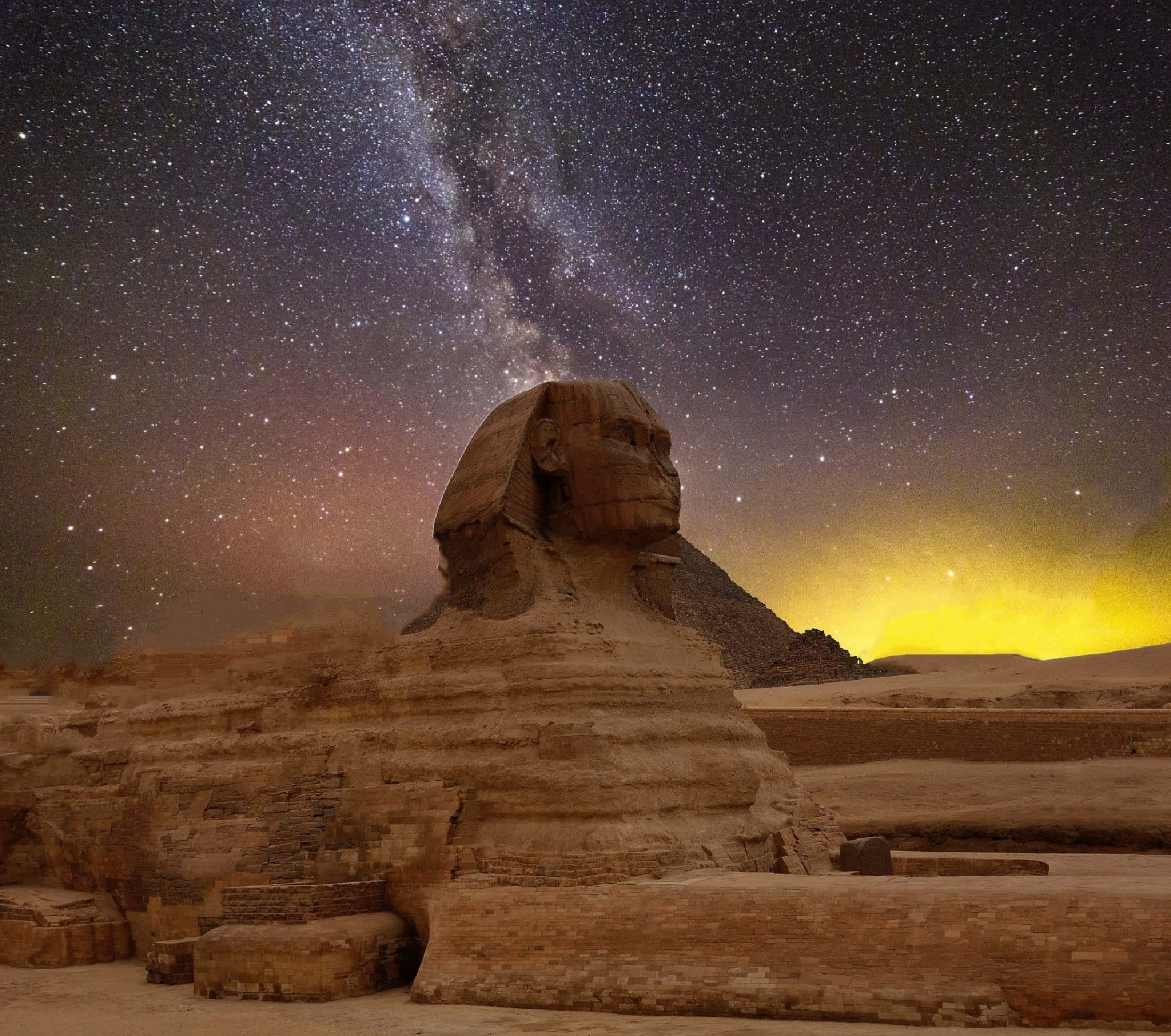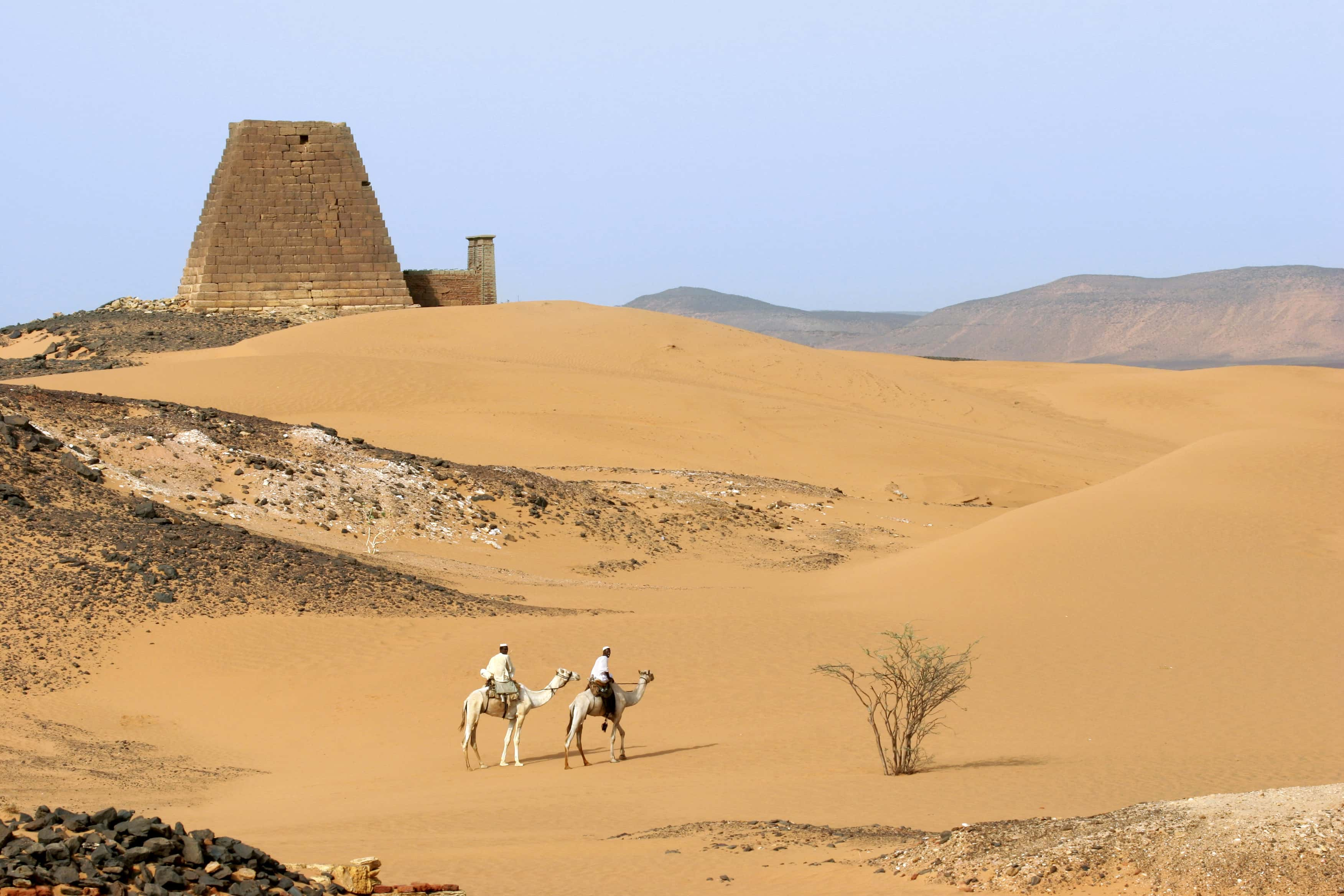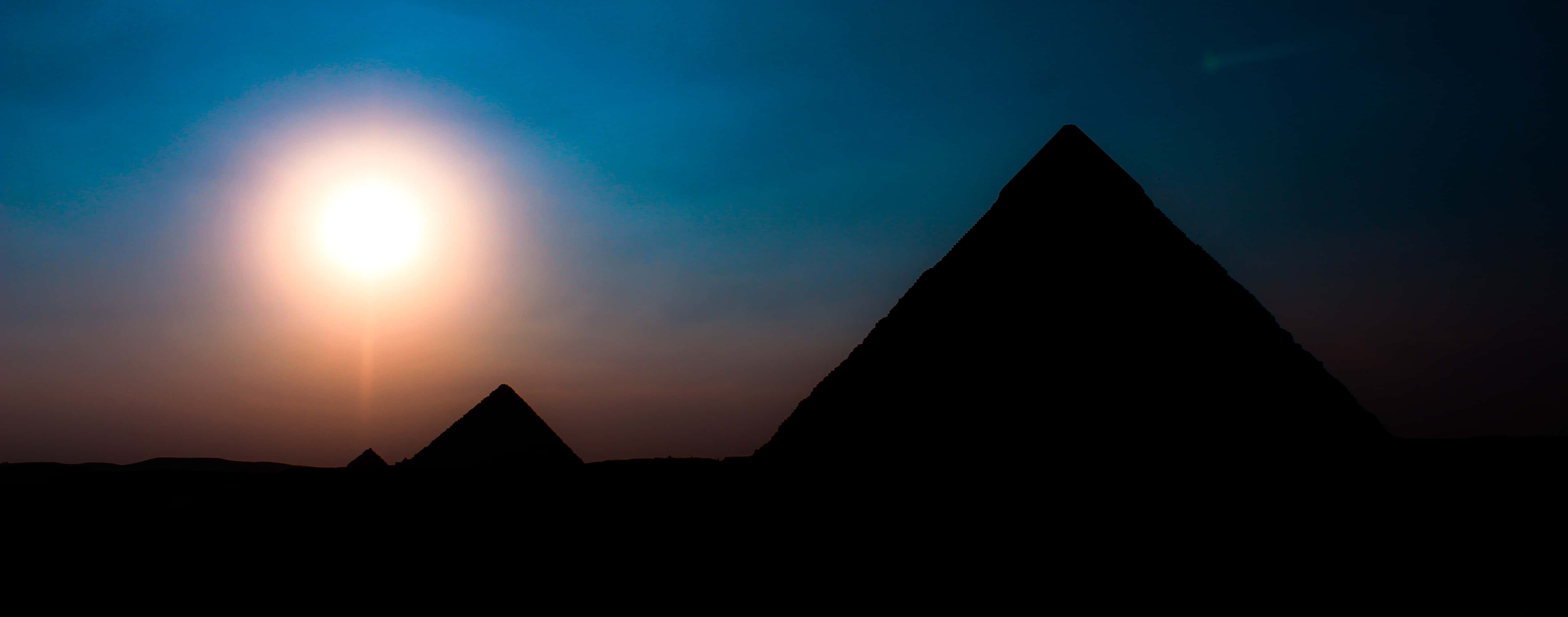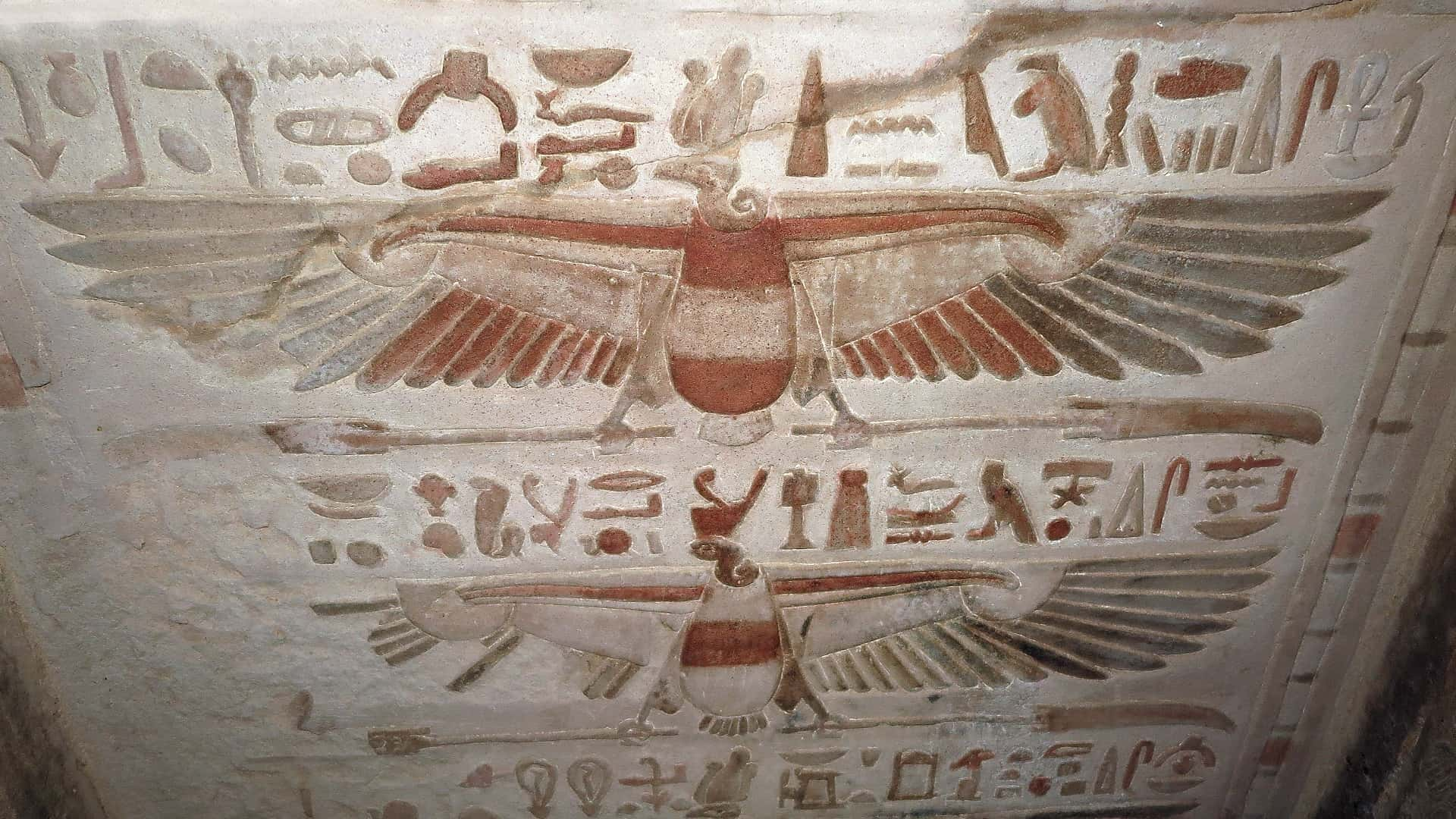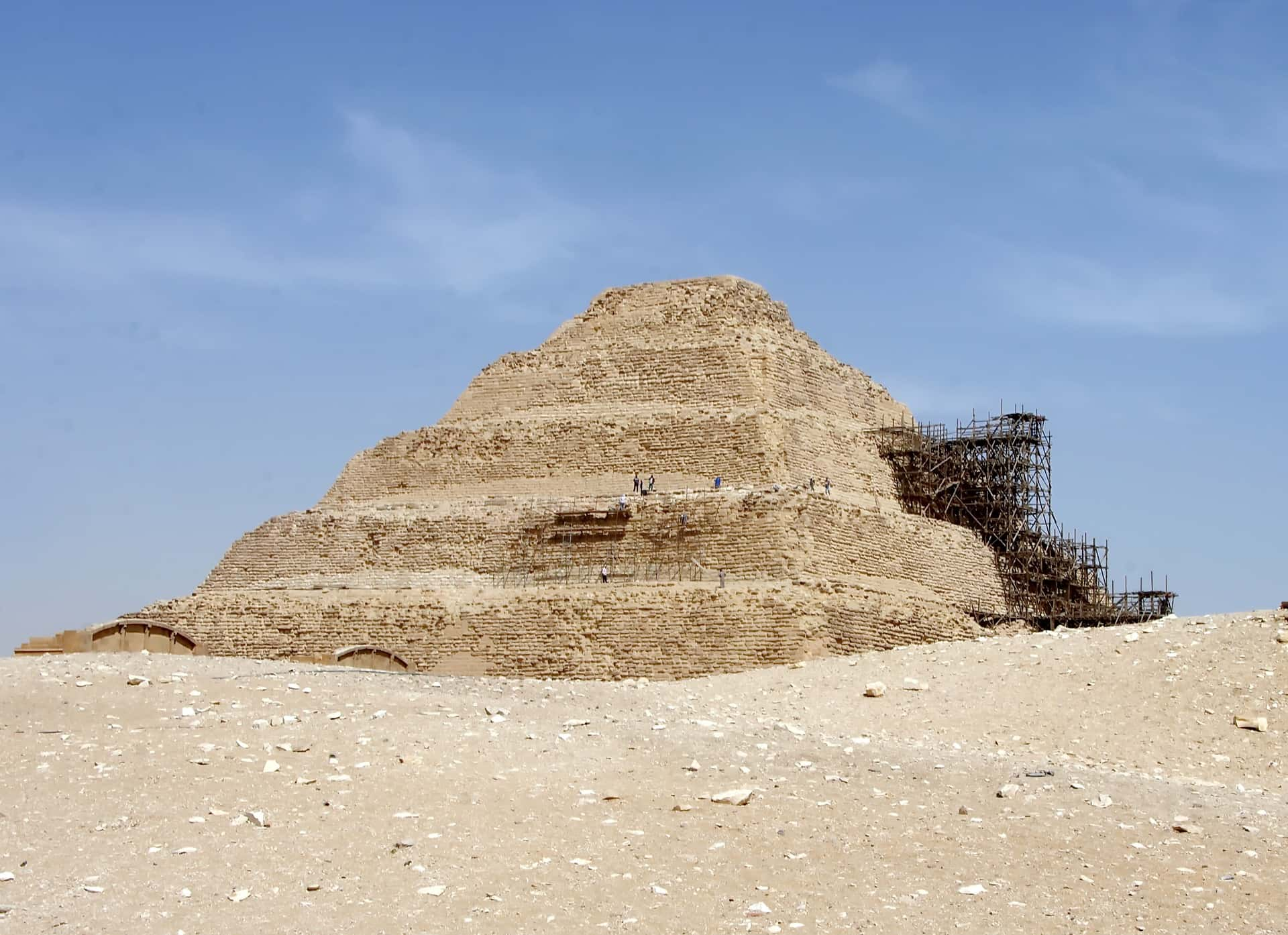“When Moses was alive, these great pyramids were a thousand years old. Here began the history of architecture. Here people learned to measure time by a calendar, to plot the stars by astronomy and chart the earth by geometry. And here they developed that most awesome of all ideas—the idea of eternity.”—Walter Cronkite
“Pyramids, cathedrals, and rockets exist not because of geometry, theories of structures, or thermodynamics, but because they were first a picture—literally a vision—in the minds of those who built them. Society is where it is today because people had the perception; the images and the imagination; the creativity that the Arts provide, to make the world the place we live in today.”—Eugene S. Ferguson
As some of the oldest standing structures on Earth, the Great Pyramids have inspired humans for thousands of years. So, how were they built? Why were they built? What do they contain? Why are they located where they are? And those questions are just the tip of the iceberg. Beyond that, the pyramids are considered so great that they represent something even larger than life, as the ancient proverb says: “Man fears time, time fears the pyramids.” Find out why the Great Pyramids of ancient Egypt are so great with these 31 incredible facts.
Great Pyramids Facts
1. Now That’s Old
The oldest of all of the Great Pyramids is the Pyramid of Djoser. This pyramid, constructed in the Saqqara Necropolis, was built during the 27th century BCE, over 4,700 years ago. It was built with ascending flat tops, making it a step pyramid, so while doesn't look quite like the more famous pyramids of Giza, it's no less impressive.
2. Ancient Architect
The Pyramid of Djoser was built by Imhotep, the person known to be the first pyramid architect of Egypt. This renaissance man was also an engineer, polymath, priest, and physician. Imhotep was so well regarded that after his death he was elevated to the status of God of Medicine.
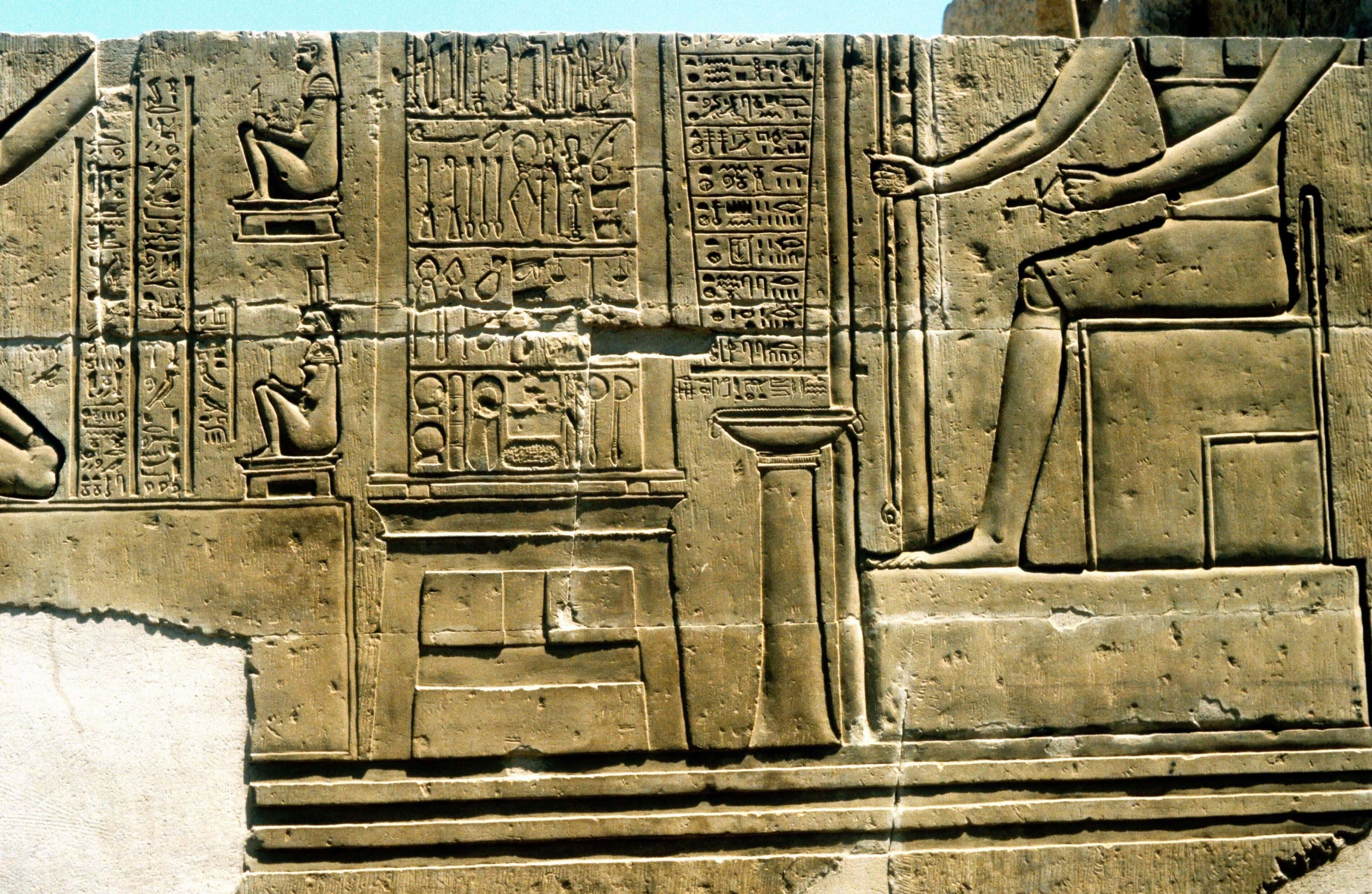
3. Shrinking Pyramid
Though it is the largest of Pyramids, the Great Pyramid of Giza has actually shrunk over time. Now standing at 138.8 meters, it was originally 146.7 meters tall.
4. Physics Meets Pyramid
In 2017, modern physics made its foray into the world of the world of the Great Pyramid of Giza. A new chamber, the first new one to be discovered since the 19th century, was discovered by scientists who used particle physics to explore the inner workings of the pyramid.
5. Realm of the Dead
The west bank of the Nile River was associated with the realm of the dead, according to Egyptian mythology, due to being where the sun sets. Because of this, the Egyptians made sure to place all of their pyramids on the west bank of the Nile River.
6. Last Wonder Standing
Of the seven wonders of the ancient world, the Great Pyramid of Giza is the only one we still have in existence today. The Hanging Gardens of Babylon, the Colossus of Rhodes, the Temple of Artemis, the Mausoleum at Halicarnassus, the Statue of Zeus at Olympia and the Lighthouse of Alexandria rounded out the list, but they were all lost to time.
7. Giza Surroundings
Your imagination may picture the pyramids of Giza surrounded by nothing but vast sandscapes, but if that is the case, then you’re in for a wake-up call. Giza is one of Egypt's most populous cities, with millions of people residing there, meaning that the Great Pyramid is flanked by neighborhoods and even a golf course which lays just a few hundred feet north. The reason why we believe the pyramids to be isolated is that the pictures we are familiar with are taken from certain angles to show off the limestone plateaus of the area. Oh, and there is not only a Pizza Hut within a stone's throw of the pyramids, but a KFC as well.
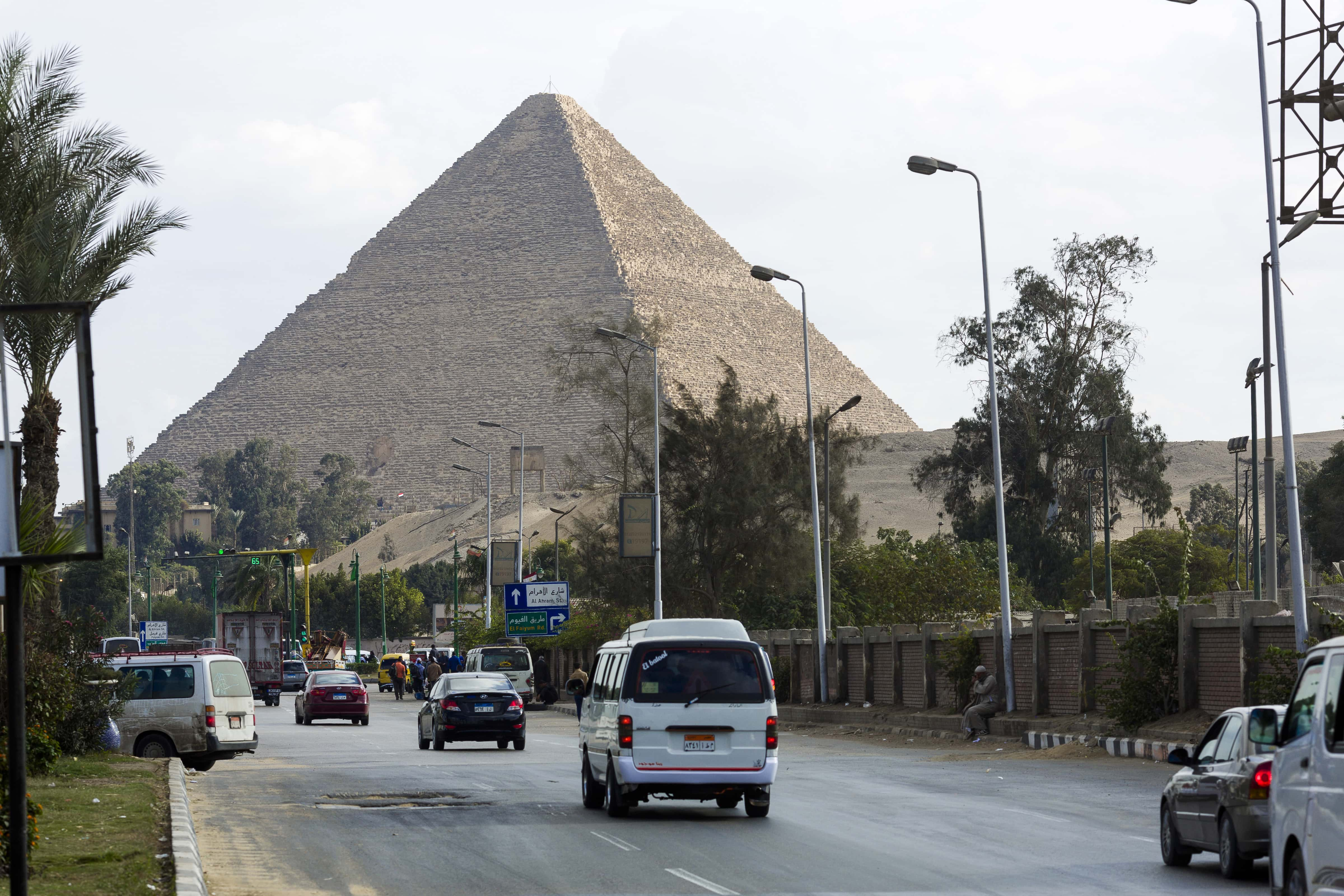
8. Tallest Building on the Planet
For over 3,800 years (3,871 to be exact), the Great Pyramid of Giza stood as the tallest man-made structure on earth. Built 4,500 years ago, the pyramid held its place as the tallest building on earth until the fourteenth century. It was the Lincoln Cathedral, built in England in 1311, that stole the title of Tallest Building away from the Great Pyramid.
9. Heavy Stones
One of the reasons why scientists are still baffled and amazed by the construction of the pyramids is that many of the stones weigh somewhere between five to ten tons apiece. Yes, you read that right, many stones of the pyramid weigh more than an elephant and hippopotamus combined, yet they were cut, moved, and placed with a truly remarkable precision.
 Wikimedia Commons, Mstyslav Chernov
Wikimedia Commons, Mstyslav Chernov

History's most fascinating stories and darkest secrets, delivered to your inbox daily.
10. That’s One Heavy Pyramid
The average stone for one of the pyramids weighs 2.5 tons, and the Pyramid of Giza has 2.3 million of these blocks alone. That puts the weight of the Great Pyramid at over 5,750,000 tons.
11. Glorious Light, Indeed
The ancient name of the Great Pyramid of Giza was “Ikhet,” which translates to “Glorious Light,” for reasons we'll get into below.
12. They Sure Did Like Building Pyramids
We only speak about a handful of ancient pyramids, but that doesn’t mean that only a handful exist. So, how many are there then? Maybe 25, 50, 100? Nope! There 138 still standing. And across the world, there are over 5,000 pyramids still standing!

13. Paid Workers
While many people believe that the Egyptian pyramids were constructed by the hands of slaves, it was the hands of paid workers who built the massive structures. Laborers who were known for their craft were brought in from the surrounding regions to take on the task of building the pyramid, though they did work extremely hard.
14. Beer for the Afterlife
We know for certain that paid laborers were used because the tombs of these workers were discovered in 2010. The bodies were respected, preserved in sand, and buried with jugs of beer and bread to accompany them in the afterlife. That makes us wonder, does that mean that the pyramids were constructed by a group of people who were a bit tipsy?
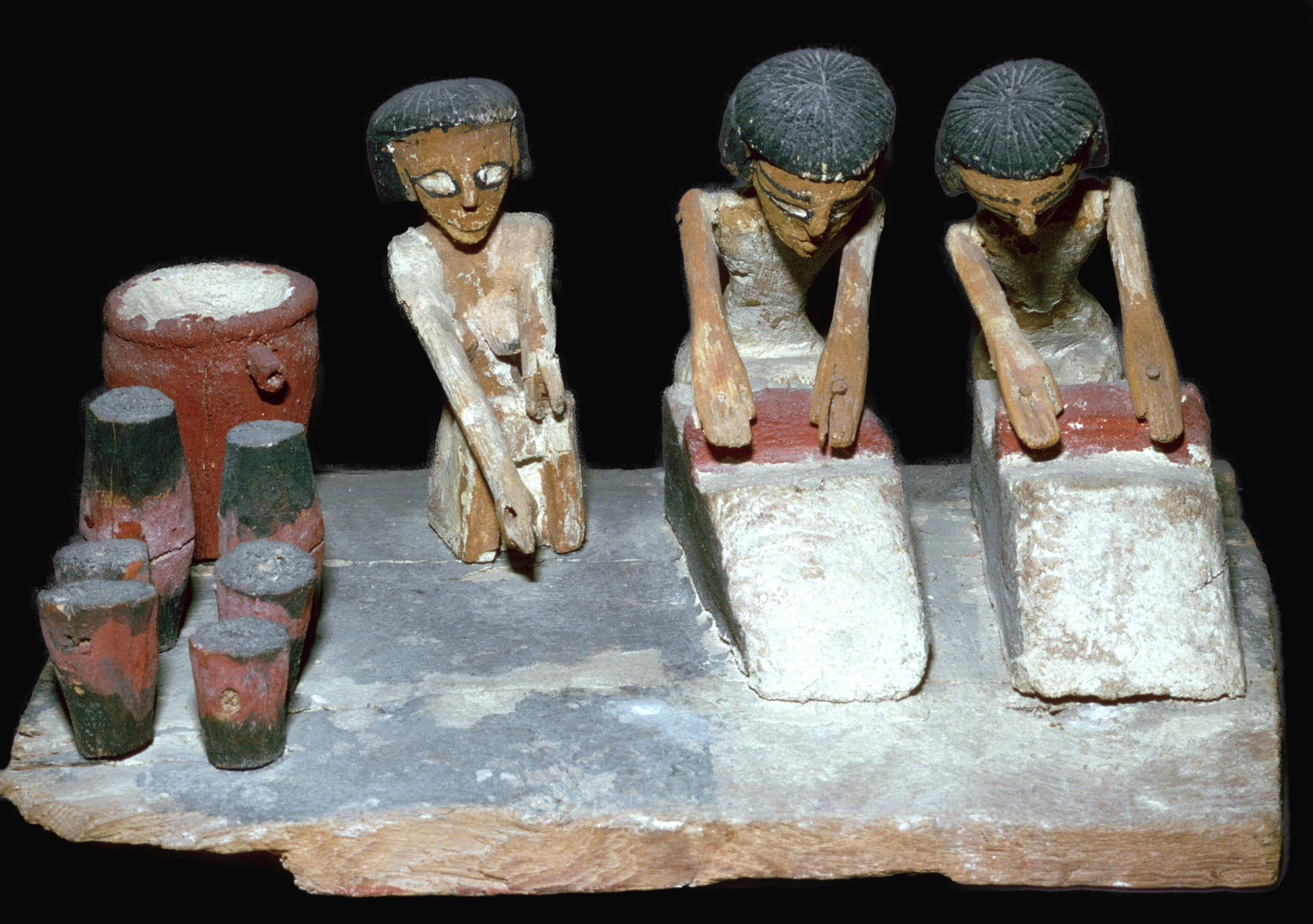
15. The Pyramid of Khufu
The Great Pyramid of Giza also goes by the name of the Pyramid of Khufu. As each pyramid was built for a different pharaoh, Khufu got the honors of getting the largest one. It is also known as the Pyramid of Cheops, which was the Hellenized version of Cheops.
16. My, That is a Large Coffer You’ve Got There
The main chamber of the Pyramid of Giza contains a massive granite sarcophagus, because if it is the largest pyramid, it must have a huge sarcophagus. What is surprising, however, is that the entrance passage which leads to the main chamber is way too narrow to have fit the sarcophagus through it. Archaeologists believe this means that instead of the sarcophagus being placed in the pyramid after its construction, the pyramid was actually built around it. Also, since the sarcophagus is much less finely constructed than the rest of the pyramid, archaeologists aren't exactly about its origin. One theory posits that the intended sarcophagus was destroyed before it made it to the site, so another had to be quickly thrown together.
17. Constellation Alignment
The ancient Egyptians knew their astrological patterns. They constructed their pyramids in north-south directional patterns to align with the Big Dipper and Little Dipper. What makes this so impressive is their accuracy, as they are placed within 0.05 degrees.
18. Sticky Stuff
In order to create such strong structures, the Egyptians concocted an adhesive mortar that really deserves being called super. With almost five million tonnes of mortar being used, the adhesive is one of the biggest reasons why the pyramids are still standing to this day, as it is stronger than the actual stone itself.
19. Mystical Leaders
For thousands of years, people have marveled at the Great Pyramids, especially the Pyramid of Giza. It has been said that such remarkable figures as Alexander the Great, Julius Caesar and even Napoleon Bonaparte all decided to spend a night inside of the Great Pyramid just to see what all the fuss was about.
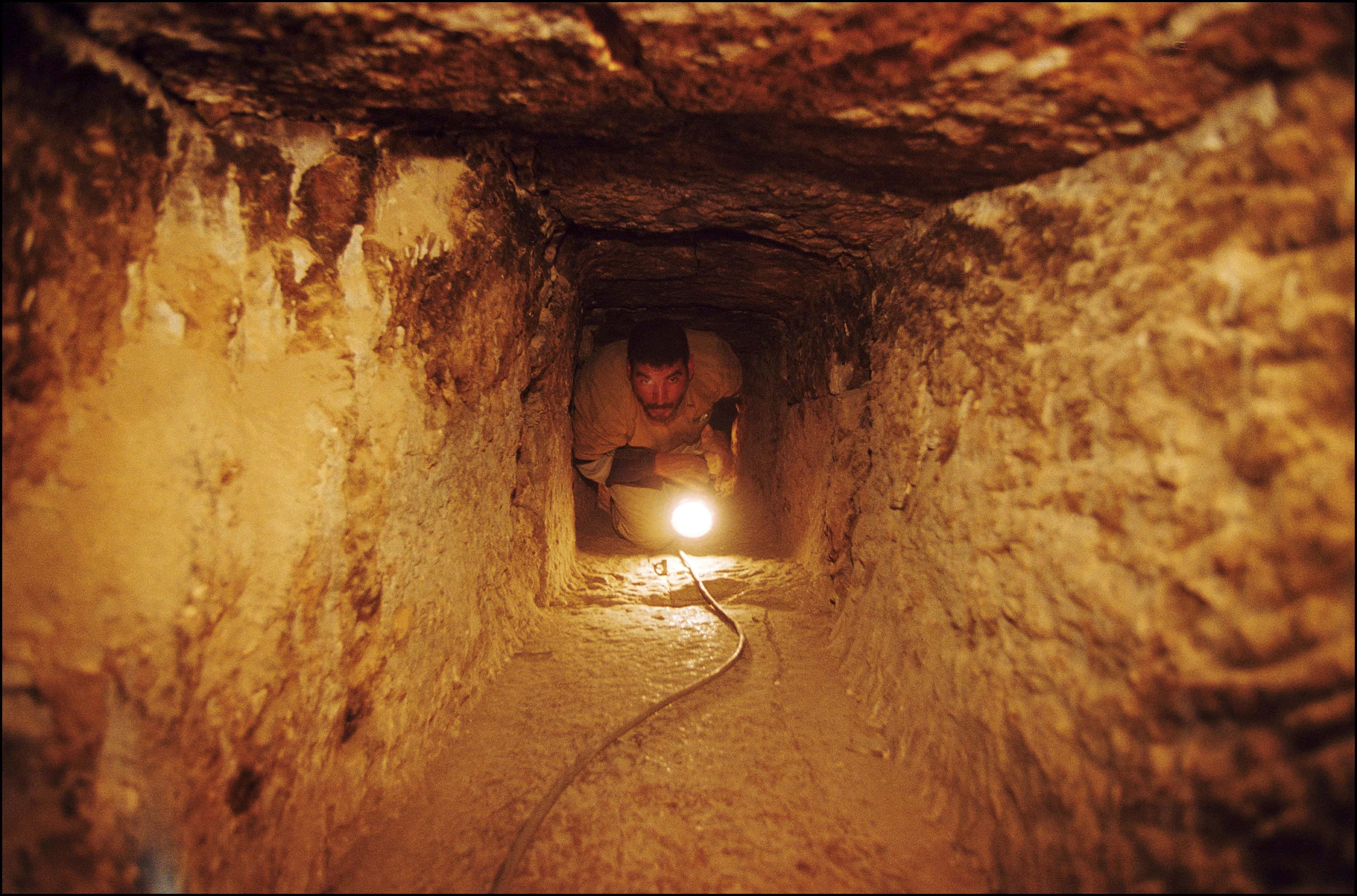
20. Enter the Void
The Great Pyramid of Giza contains a “Big Void,” as it has been named. This “Big Void” is a massive structure that resembles a corridor and is believed to be a Grand Gallery. Hidden behind the North face of the pyramid for hundreds of years, this mysterious void has yet to be explored by modern scientists and what it contains is still unknown. This is just one of many unknown voids that the Great Pyramids contain, which have only recently been realized with the implementation of modern scanning technology.
21. How Many Workers Does It Take To Build A Pyramid
There is no way to know just how many people it took to construct one of the Great Pyramids, but it is believed by many that it would have taken up to 100,000 individual workers.
22. Sphinx Protection
The Egyptians knew that the incredible Giza Necropolis needed to be guarded by a structure of equal magnanimity, and they didn’t disappoint. The Great Sphinx, which was likely built in the representation of the Pharaoh Khafre, stands on guard at the entrance to the necropolis. The Great Sphinx is also the largest monolith statue on the face of Earth.
23. Chiseled with Copper
Though no one knows just how the stones of the pyramids were placed in construction, it is widely agreed that the massive blocks were carved with .

24. Evolving Practice
Even though we do not know exactly how the pyramids were constructed, it is accepted that the techniques used to construct them evolved over time. This means that while Imhotep was the original architect, his practices were worked on and developed as the centuries passed. Of course, maybe some of them were even dropped and replaced with better strategies.
25. Inspiring More Pyramids
The Great Pyramids spurred the construction of other pyramids around the region. After the pyramid period ended in the north, another period of pyramid construction took place further south, in what is now Sudan, creating what are now called the Nubian Pyramids.
26. Indestructible
The ancient pyramids didn’t only have to survive mother nature, but also mankind. In the 12th century, Sultan Al-Aziz of the Kurdish Ayyubid Empire made an attempt to destroy the Giza pyramids. While his attempt was futile, he did leave his mark by gashing the northern face of the Menkaure Pyramid.
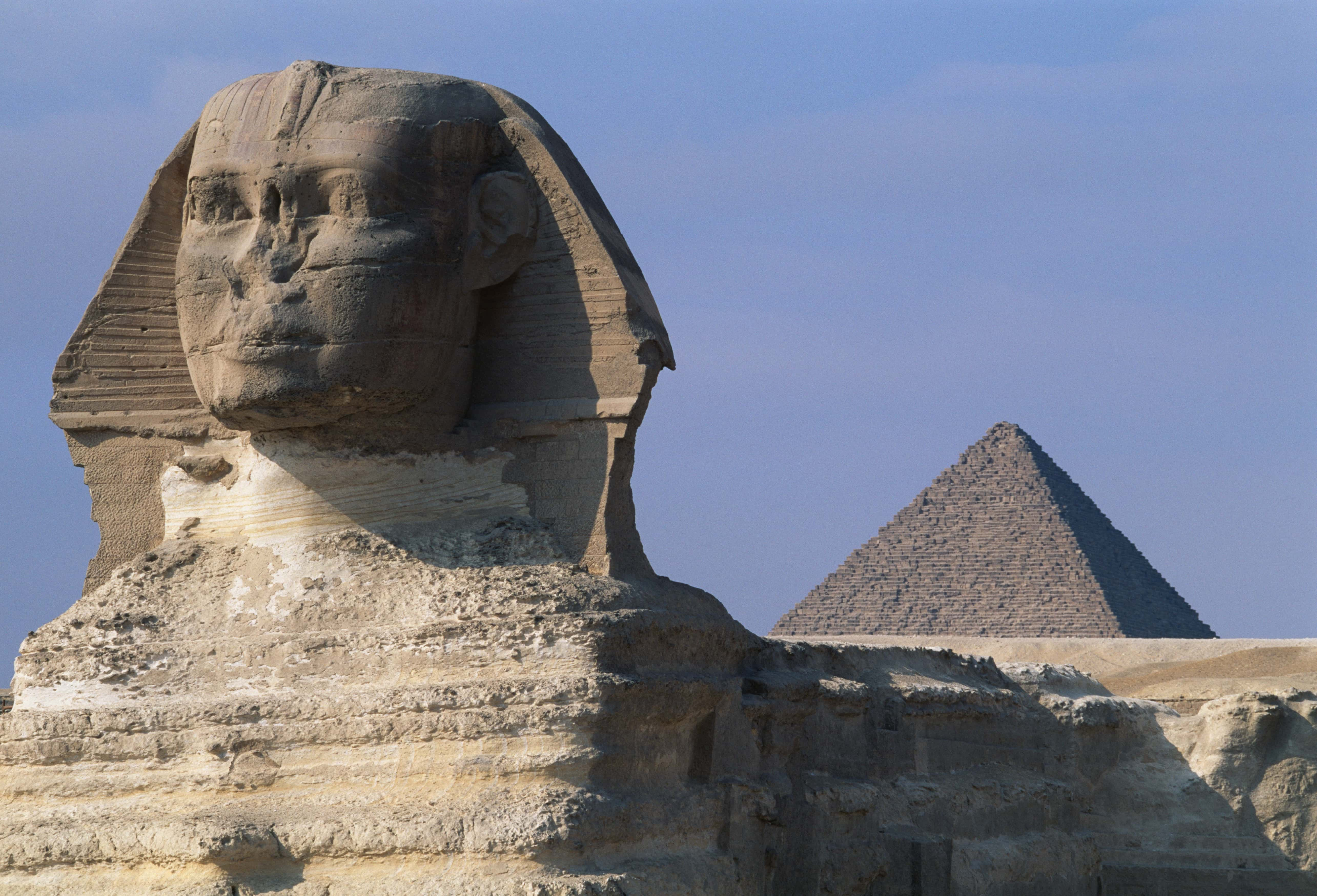
27. Lining Up with Osiris
One theory about the pyramids of Giza posits that they were designed and placed to correlate with the three stars in Orion's Belt. The constellation of Orion was known by the Egyptians—it was associated with their god Sah—but it has not been proven whether or not the pyramids' similarity to the constellation was intentional or not. They do line up pretty well though...
28. Shine On You Crazy Stars
The pyramids didn't always look like they do today. Their faces were originally polished with a casing of white limestone. The purpose of the limestone layer was the reflect the sun and light up the structures, which would make them their own little stars visible for many miles. Glorious Light, indeed.
29. No to Read Here
In 2011, a group of researchers sent a small robot into the Great Pyramid to search some of its unexplored areas, and it managed to find a secret chamber with strange hieroglyphics written in red paint. Who knows what further exploration like this will uncover?
30. Still Served After Death
While Pharaohs got to be buried in enormous, majestic Pyramids, what about the non-royals? Well, while they didn't get anything quite so impressive, many lower-rank Egyptians got to be buried in smaller tombs called "mastabas." These were rectangular structures with flat roofs but with sides that gradually leaned inward—think like a pyramid with the top 80% or so cut off. Hey, it could be worse.

